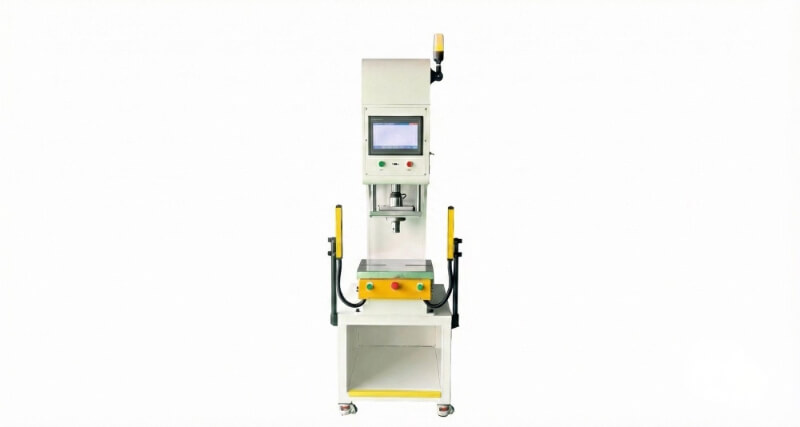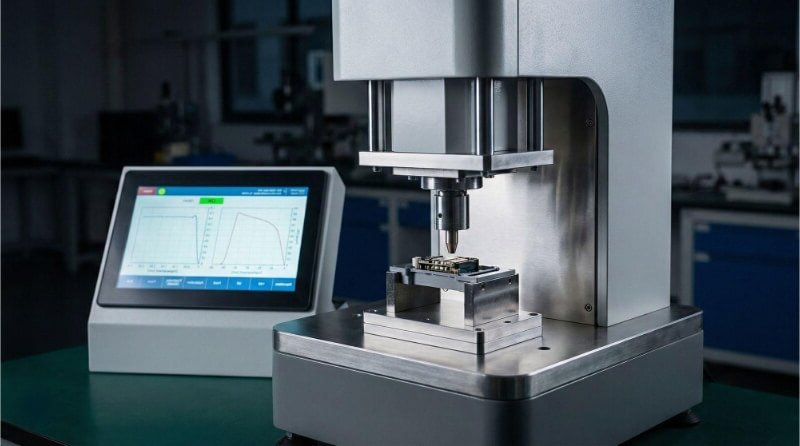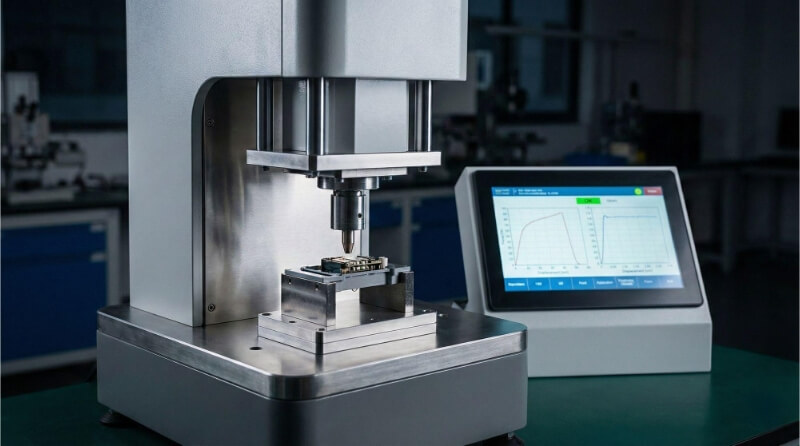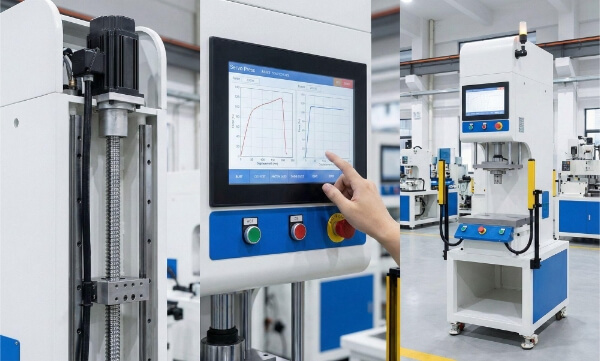금속으로 작업할 때는 부러지지 않고 구부러지고 모양을 만들 수 있는 소재를 선택하는 것이 필수적입니다. 많은 엔지니어와 디자이너는 생산 및 일상적인 사용 중에 압력을 견디고 늘어나거나 휘어지는 부품을 필요로 합니다. 알루미늄 사용을 고려하고 있다면 한 가지 중요한 질문을 해보세요: 알루미늄이 깨지지 않고 구부러질 수 있으며 성형, 프레스 또는 드로잉에 충분히 유연할까요?
알루미늄은 강도와 유연성이 독특하게 혼합된 소재입니다. 알루미늄의 연성은 등급, 형태 및 가공에 따라 달라질 수 있습니다. 알루미늄이 연성이 있는 이유와 이 특성을 다음 프로젝트에 활용하는 방법을 살펴보세요.
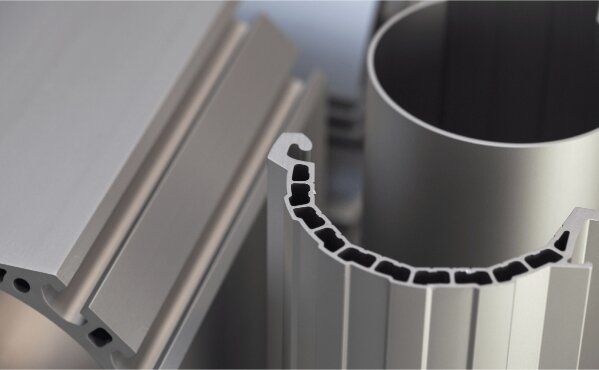
연성이란 무엇인가요?
연성은 금속이 부러지기 전에 얼마나 많은 변형을 견딜 수 있는지를 나타냅니다. 경도나 강도와는 다른 개념입니다. 금속은 부드러우면서도 연성이 매우 높을 수 있습니다. 또는 강하고 부서지기 쉬워 압력을 받으면 부러질 수도 있습니다. 연성 금속은 '연신율'이 높기 때문에 파손되기 전에 더 많이 늘어날 수 있습니다.
연성은 알루미늄을 더 쉽게 작업할 수 있게 해줍니다. 구부리기, 그리기, 스탬핑 또는 압연과 같은 공정이 가능합니다. 이러한 성형 방법은 금속이 찢어지지 않고 얼마나 많이 움직일 수 있는지에 따라 달라집니다.
엔지니어에게 연성은 부품이 생산 및 사용 중에 작동하는 방식에 영향을 미칩니다. 연성 소재는 응력을 흡수하고 형상 변화를 처리할 수 있습니다. 또한 갑작스러운 압력이나 진동에 의한 균열에도 견딜 수 있습니다.
알루미늄의 기본 특성
알루미늄은 가볍고 성형이 쉬운 것으로 알려져 있습니다. 하지만 알루미늄이 그렇게 작동하는 이유는 무엇일까요? 그것은 원자 구조와 다양한 원소가 어떻게 혼합되어 있는지에 달려 있습니다.
순수 알루미늄의 구성과 구조
순수 알루미늄은 한 종류의 원자가 면 중심 정육면체(FCC) 결정 구조로 배열된 형태로 이루어져 있습니다. 이 구조는 매우 미끄러지기 쉬우므로 힘이 가해지면 원자 층이 서로 이동할 수 있습니다.
이것이 바로 순수 알루미늄이 부드럽고 연성이 좋은 이유 중 하나입니다. 부러지기 전에 많이 늘어날 수 있지만 자체적으로 강도가 높지 않아 까다로운 용도로는 사용이 제한됩니다.
일반적인 알루미늄 합금
제조업체는 강도를 높이기 위해 알루미늄에 다른 원소를 첨가합니다. 여기에는 구리, 마그네슘, 실리콘, 아연 또는 망간이 포함됩니다. 이러한 추가 원소는 알루미늄을 더 단단하고 강하게 만듭니다.
알루미늄 합금에는 크게 두 가지 그룹이 있습니다:
- 단조 합금 롤링, 압출 또는 드로잉으로 모양을 만들 수 있습니다.
- 주조 합금 를 몰드에 붓고 굳힙니다.
각 합금에는 연성과 강도가 혼합되어 있습니다. 예를 들어 1100 알루미늄은 연성이 매우 높지만 부드럽습니다. 6061과 5052는 여전히 연성이 있지만 더 강하고 구조 부품에 더 유용합니다.
인장 강도 대 연성
인장 강도는 금속이 부러지기 전에 견딜 수 있는 당기는 힘의 양이며, 연성은 그 전에 늘어나거나 변형될 수 있는 양입니다.
인장 강도가 높아지면 연성은 낮아지는 경우가 많습니다. 더 강한 합금은 더 많은 응력을 견딜 수 있지만 일반적으로 덜 늘어납니다. 더 부드러운 재종은 더 많이 늘어날 수 있지만 많은 하중을 견디지 못합니다.
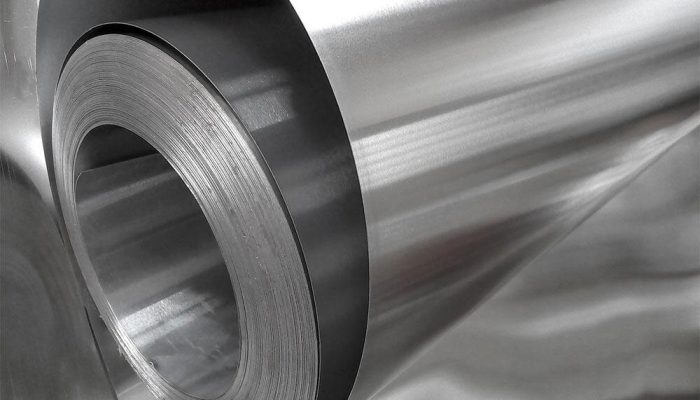
알루미늄은 연성이 있나요?
알루미늄은 성형성 때문에 널리 사용되지만, 얼마나 늘어나거나 구부러질 수 있는지는 정확한 유형에 따라 다릅니다. 순수 알루미늄과 그 합금을 비교해 보겠습니다.
순수 알루미늄의 연성
순수 알루미늄은 연성이 매우 높습니다. 부러지기 전에 원래 길이의 최대 50%까지 늘어날 수 있어 딥 드로잉, 회전 및 기타 성형 공정에 매우 유용합니다.
원자 구조 덕분에 원자 층이 서로 쉽게 미끄러져 지나갈 수 있습니다. 그렇기 때문에 금이 가지 않고 구부러집니다. 하지만 순수 알루미늄은 부드럽기 때문에 고강도 부품에는 사용되지 않습니다. 알루미늄은 하중을 견디는 강도보다 모양과 유연성이 더 중요한 용도에서 빛을 발합니다.
연성에 대한 합금의 영향
알루미늄에 다른 원소를 첨가하여 합금을 만들면 일반적으로 연성은 감소하지만 강도는 증가합니다. 이 절충점은 금속을 더 까다로운 작업에 적합하게 만드는 데 도움이 됩니다.
예를 들어
- 6061 알루미늄 는 강도가 좋고 연성이 좋습니다. 다음 분야에서 널리 사용됩니다. 프레임 및 기계 부품.
- 5052 알루미늄 는 더 부드럽고 연성이 뛰어납니다. 쉽게 구부러지고 균열이 잘 생기지 않아 다음과 같은 용도에 적합합니다. 인클로저 그리고 패널.
- 7075 알루미늄 은 견고하지만 연성이 낮습니다. 유연성보다 강도가 더 중요한 항공우주 분야에서 사용됩니다.
알루미늄은 특히 순수한 형태에서는 연성이 있습니다. 그러나 합금과 가공 방법에 따라 연성 수준이 달라집니다.
알루미늄의 연성 측정
알루미늄의 연성을 알기 위해서는 테스트를 해봐야 합니다. 엔지니어는 표준 테스트를 통해 금속이 부러지기 전에 얼마나 늘어날 수 있는지 확인합니다. 이러한 테스트를 통해 설계 및 소재 선택을 위한 정확한 데이터를 얻을 수 있습니다.
인장 테스트 설명
인장 시험은 연성을 측정하는 가장 일반적인 방법입니다. 금속 샘플을 제어된 기계에서 잡아당깁니다. 늘어날 때 기계는 얼마나 많은 힘이 가해지고 샘플이 부러지기 전에 얼마나 멀리 늘어나는지 기록합니다.
항복 강도 및 연신율
항복 강도는 금속이 다시 튀어나오지 않고 늘어나기 시작하는 지점입니다. 이는 소성 변형의 시작을 의미합니다.
연신율은 금속이 처음부터 끝까지 얼마나 늘어나는지를 측정합니다. 일반적으로 백분율로 표시됩니다. 예를 들어, 부러지기 전에 25%가 늘어나는 금속은 연신율이 25%입니다. 연신율이 높을수록 연성이 높다는 뜻입니다.
스트레스-응력 곡선 해석하기
인장 테스트 결과는 응력-변형률 곡선으로 표시됩니다. 이 그래프를 통해 금속이 하중 하에서 어떻게 작동하는지 확인할 수 있습니다.
- 곡선은 직선으로 시작하는데, 이것이 바로 탄성 영역입니다.
- 곡선이 구부러지는 지점이 바로 항복점입니다.
- 그 후에는 금속이 부러질 때까지 적은 힘으로 더 많이 늘어납니다.
곡선 아래의 면적은 금속이 흡수할 수 있는 에너지의 양을 나타냅니다. 곡선이 길수록 일반적으로 더 좋은 연성을 의미합니다.
연성 테스트 방법
인장 테스트 외에도 엔지니어는 다음을 사용할 수 있습니다:
- 굽힘 테스트: 금속을 설정된 각도로 구부려 균열이나 파손 여부를 확인합니다.
- 부항 테스트: 펀치가 금속판을 눌러 돔을 형성하여 얼마나 멀리 늘릴 수 있는지 테스트합니다.
- 경도 및 인성 테스트: 이는 재료의 연성에 대한 단서를 제공하지만 인장 테스트를 대체할 수는 없습니다.
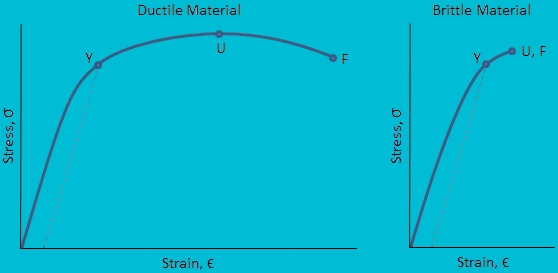
알루미늄의 연성에 영향을 미치는 요인
알루미늄의 연성은 고정되어 있지 않습니다. 여러 조건에 따라 달라질 수 있습니다. 이러한 요소는 가공 중에 얼마나 쉽게 구부러지거나 늘어나거나 형태를 형성하는지에 영향을 줍니다.
온도
연성은 열에 의해 증가합니다. 온도가 높을수록 알루미늄 원자가 더 자유롭게 움직이기 때문에 금속이 갈라지지 않고 쉽게 늘어납니다.
열간 성형은 알루미늄 부품을 성형하는 데 자주 사용됩니다. 특히 더 복잡한 합금에서 찢어짐을 방지하는 데 도움이 됩니다. 반면 저온 성형은 연성을 감소시키고 알루미늄이 응력을 받으면 균열이 발생할 가능성이 높습니다.
합금 구성
다양한 합금 원소는 다양한 방식으로 연성에 영향을 미칩니다. 마그네슘이나 실리콘과 같은 일부 원소는 강도를 증가시키지만 신축성을 감소시킵니다.
예를 들어 1100 알루미늄(거의 순수)은 연성이 매우 높습니다. 6061은 연성은 낮지만 강도는 더 좋습니다. 7075는 강도가 높지만 성형성이 제한적입니다.
변형률
변형률은 힘을 가하는 속도를 의미합니다. 알루미늄을 천천히 늘리면 일반적으로 더 쉽게 변형됩니다. 빠르게 당기면 금속이 적응할 시간이 부족하여 금이 갈 수 있습니다.
성형 작업에서는 변형 속도가 느릴수록 더 나은 결과를 얻을 수 있는 경우가 많습니다. 고속 성형은 실패를 방지하기 위해 특별한 설정이 필요할 수 있습니다.
입자 구조
입자 크기는 금속이 응력 하에서 움직이는 방식에 영향을 미칩니다. 입자가 미세하면 더 균일하게 움직일 수 있지만 입자가 거칠면 고르지 않은 변형과 균열이 발생할 수 있습니다.
압연 또는 어닐링과 같은 가공 방법은 입자 크기를 제어하는 데 도움이 됩니다. 입자가 미세한 알루미늄은 연성이 더 좋은 경향이 있습니다.
열처리
열처리는 알루미늄의 내부 구조를 변화시킬 수 있습니다. 어닐링은 금속을 부드럽게 하고 연성을 높입니다. 용액 열처리와 노화는 강도를 증가시키지만 성형성을 감소시킬 수 있습니다.
O(어닐링)와 같은 일부 템퍼는 높은 연성을 제공합니다. T6(용액 열처리 및 숙성)와 같은 다른 성질은 더 단단하고 유연성이 떨어집니다.
가공경화
알루미늄이 변형되면 더 단단해집니다. 이를 가공 경화라고 합니다. 강도는 증가하지만 연성은 감소합니다.
어닐링 없이 너무 많이 성형하면 금속이 부서지기 쉽습니다. 그렇기 때문에 일부 부품은 여러 번의 성형 및 연화 단계를 거쳐 생산 중에 연성을 유지하는 데 도움이 됩니다.
장점과 단점
알루미늄의 연성에는 많은 장점이 있지만 단점도 있습니다. 두 가지 측면을 모두 파악하면 용도에 적합한 소재를 선택하는 데 도움이 됩니다.
장점
- 간편한 양식: 알루미늄 벤드특히 순수하거나 부드러운 성질의 형태로 잘 그려지고 잘 눌러집니다.
- 복잡한 모양에 적합합니다: 유연성을 통해 다음을 수행할 수 있습니다. 딥 드로잉회전 또는 스탬핑 균열 없이.
- 경량: 강철이나 기타 금속의 무게 없이도 성형성을 확보할 수 있습니다.
- 재작업 친화적: 성형이 계획대로 진행되지 않을 경우 연성 알루미늄을 손상 없이 다시 성형할 수 있는 경우가 많습니다.
- 성형 시 균열 저항성: 연성 알루미늄은 구부리거나 펀칭할 때 가장자리 균열이 생기지 않습니다.
단점
- 순수한 형태의 낮은 강도: 높은 연성은 종종 낮은 강도를 의미합니다. 순수 알루미늄은 무거운 하중을 견디지 못합니다.
- 스트레스가 많은 지역에서의 제한적 사용: 연성 알루미늄 합금은 적절하게 선택하지 않으면 응력을 받으면 변형될 수 있습니다.
- 추가 단계가 필요할 수 있습니다: 고강도 부품의 경우 알루미늄을 열처리하거나 합금해야 하므로 비용이 추가될 수 있습니다.
- 표면 표시: 연성 소재는 무거운 성형 시 자국이나 왜곡이 더 쉽게 나타날 수 있습니다.
- 작업 경화 위험: 어닐링하지 않으면 여러 번 구부리거나 성형하면 시간이 지남에 따라 연성이 감소할 수 있습니다.
다른 금속과의 비교
알루미늄은 성형 또는 구조 부품을 위한 재료를 선택할 때 종종 강철 및 구리와 같은 금속과 비교됩니다. 다음은 결정을 내리는 데 도움이 되는 간단한 비교표입니다.
| 속성 | 알류미늄 | 강철 | 구리 |
|---|---|---|---|
| 밀도(g/cm³) | 2.7 | 7.8 | 8.9 |
| 연성 | 높은 | 중간에서 낮음 | 높은 |
| 무게 대비 강도 비율 | 높은 | Medium | 낮은 |
| 부식 저항 | 좋음(자연적으로 산화물 층 형성) | 낮음(코팅 필요) | 좋은 |
| 성형성 | 훌륭한 | 좋은 | 좋은 |
| 열 전도성 | 높은 | Medium | 매우 높음 |
| 전기 전도도 | 좋은 | 낮은 | 훌륭한 |
| 작업성 | 손쉬운 가공 및 성형 | 기계 가공하기 어려움 | 부드럽고 쉬운 성형 |
연성이 중요한 애플리케이션
많은 산업에서 알루미늄은 부러지지 않고 구부러지고 늘어나는 능력이 제품 설계와 성능에 중요한 역할을 합니다. 다음은 연성이 중요한 몇 가지 분야입니다.
항공우주 부품
항공우주 산업에서 부품은 높은 스트레스, 진동, 온도 변화에 직면합니다. 연성이 좋은 알루미늄 합금은 충격을 흡수하고 균열을 방지하는 데 도움이 됩니다. 알루미늄 합금은 날개 스킨, 동체 패널, 내부 프레임에 사용됩니다. 이러한 부품은 가벼우면서도 하중을 받으면 고장 없이 약간 변형될 수 있어야 합니다.
자동차 차체 패널
차체는 스탬핑 중에는 쉽게 구부러지지만 성형 후에는 모양이 유지되는 금속이 필요합니다. 연성 알루미늄은 도어, 후드 및 패널에 깊은 드로잉과 날카로운 곡선을 허용합니다. 또한 차량 무게를 줄여 연비와 성능을 개선하는 데 도움이 됩니다.
소비자 가전 하우징
휴대폰, 노트북, 태블릿은 깔끔한 외관과 견고한 느낌을 위해 얇은 알루미늄 커버를 사용합니다. 이러한 하우징은 스탬핑을 통해 모양을 만들거나 압출. 연성은 금속을 매우 얇은 게이지에서도 균열 없이 정밀한 모양으로 성형할 수 있도록 합니다.
결론
알루미늄은 연성 금속입니다. 알루미늄은 특히 순수하거나 부드러운 성질의 형태로 힘을 가하면 잘 구부러지고 늘어나며 형태를 형성합니다. 연성은 합금 유형, 온도 및 가공 방법에 따라 달라집니다. 이러한 유연성 덕분에 알루미늄은 균열 없이 성형해야 하는 부품에 가장 적합한 소재입니다.
정밀도와 유연성이 요구되는 알루미늄 부품이 필요하신가요? 도면 또는 프로젝트 세부 정보를 보내주세요. - 저희 팀이 고객의 요구에 맞는 합금과 공정을 선택할 수 있도록 도와드립니다.
안녕하세요, 저는 케빈 리입니다

지난 10년 동안 저는 다양한 형태의 판금 제작에 몰두해 왔으며 다양한 워크숍에서 얻은 경험에서 얻은 멋진 통찰력을 이곳에서 공유했습니다.
연락하세요

케빈 리
저는 레이저 절단, 굽힘, 용접 및 표면 처리 기술을 전문으로 하는 판금 제조 분야에서 10년 이상의 전문 경험을 갖고 있습니다. Shengen의 기술 이사로서 저는 복잡한 제조 문제를 해결하고 각 프로젝트에서 혁신과 품질을 주도하는 데 최선을 다하고 있습니다.

